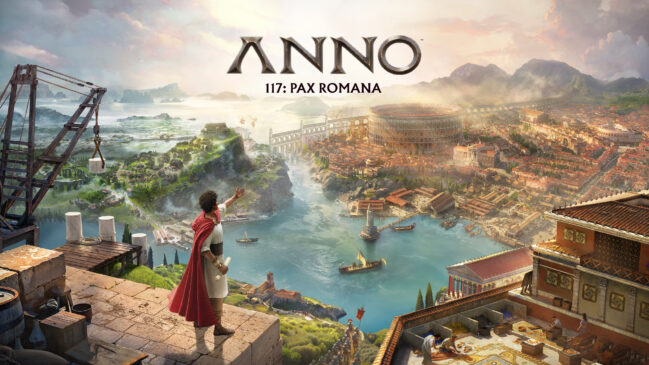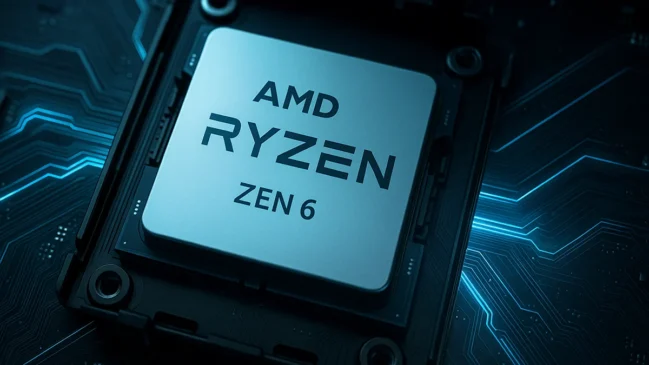
Ubisoft Mainz has always been known for its slow, thoughtful city builders, and Anno 117: Pax Romana continues that tradition while finally giving it a fresh coat of marble. Set during the height of the Roman Empire, this entry takes the familiar Anno formula and moves it into one of history’s most fascinating eras. The result is a deep, rewarding strategy game that’s both beautiful and demanding, though it still struggles to welcome newcomers.
AT A GLANCE
- Developer / Publisher: Ubisoft Mainz / Ubisoft
- Platforms: PC, PlayStation 5, Xbox Series X|S
- Release Date: 13th November 2025
Story
The game puts you in the sandals of a Roman governor, either Marcus or Marcia, tasked with managing a province on the edges of the empire. You can choose to build in the sunny Mediterranean or the rougher, rain-soaked lands of Albion, and that choice shapes the tone of your campaign.
There isn’t a grand, cinematic narrative here. The story mostly unfolds through letters, advisors, and the occasional event chain that challenges your leadership. It’s not the kind of storytelling that will keep you glued to the screen, but it fits the game’s tone. You’re not meant to be a hero in a cutscene. You’re a bureaucrat with too many citizens, not enough bricks, and a Senate breathing down your neck.
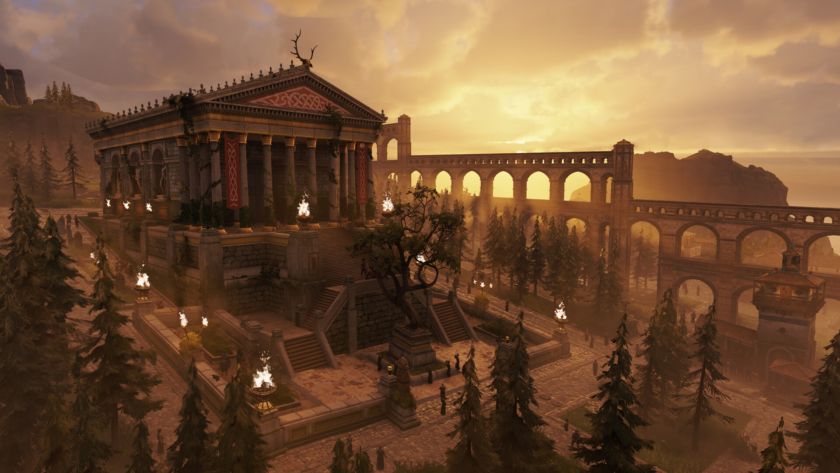
The worldbuilding, though, is where Anno 117 shines. Every structure, policy, and trade deal helps you feel the weight of Roman civilization. The game subtly explores themes of power and exploitation without ever turning preachy. It’s all about the quiet satisfaction of maintaining peace through efficiency, the “Pax Romana” in your province’s name is something you’ll have to earn.
Gameplay
At its heart, Anno 117: Pax Romana is a game about control, not through conquest or charisma, but through patient, methodical mastery of systems. It is about watching cause and effect ripple through an empire that you have built from nothing. Every decision, from where you place a warehouse to how much grain you export, can shift the balance between prosperity and collapse.
If you have played Anno 1800, much of the foundation will feel familiar. You start with a modest settlement, a few citizens, and the bare essentials for survival. From there, you expand by building production chains that turn raw resources into refined goods. Wheat becomes bread, clay becomes pottery, iron becomes weapons. Each chain feeds into another, creating a living network that demands constant attention and adjustment.
What separates Pax Romana from its predecessors is the way it handles growth. In older entries, expansion often felt like painting by numbers. You would place buildings on strict grids and fine-tune efficiency until the numbers lined up. In this new version, your city feels more alive and less predictable. The freedom to build diagonally may sound like a small detail, but it completely changes how cities develop. Roads now follow the natural shape of the land, curving around hills and rivers instead of cutting through them. Your towns stop looking like mechanical blueprints and start looking like believable Roman communities.
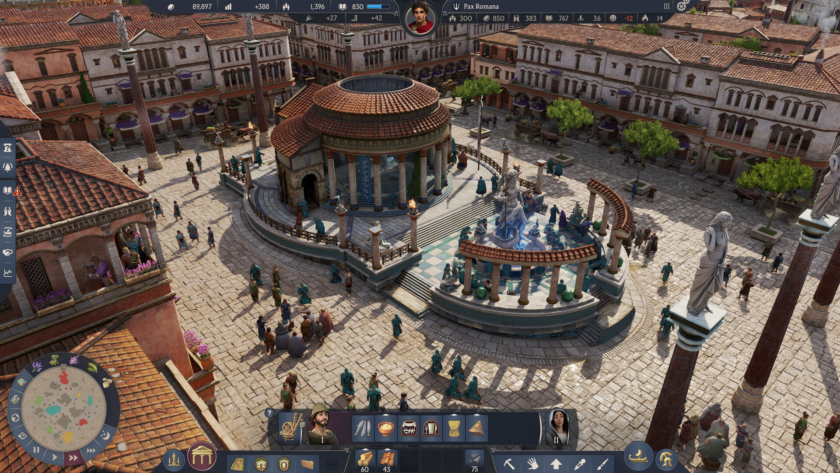
Proximity and influence also play a much larger role. Buildings now affect each other in more dynamic ways. A vineyard placed near villas produces better wine, while an ironworks too close to homes can lower the surrounding happiness. This new spatial logic forces you to think beyond efficiency. You start designing for both function and atmosphere, balancing the comfort of your citizens with the productivity of your industries.
Population management remains the backbone of the Anno experience. Citizens rise through social tiers as you meet their needs, unlocking new buildings and technologies in the process. Early on, you are concerned only with food and clothing. As your society grows, the demands evolve into luxury goods, entertainment, faith, and infrastructure. Each new requirement adds another layer to the balancing act.
Despite the constant micromanagement, Pax Romana rarely feels exhausting. It is busy in the best possible way. When your trade routes flow smoothly and your city hums with life, there is a deep sense of satisfaction. Watching goods move from farms to workshops to markets feels like observing a perfectly tuned machine. When something breaks, you notice immediately. A bread shortage might cause unrest, a missing supply of marble could halt construction, and a single inefficient trade route can throw your entire economy into disarray. Those moments of crisis make the successes feel even more rewarding.
The military and diplomacy systems have received meaningful attention as well. While Anno has never been known for its combat, Pax Romana adds enough to make your decisions carry real weight. You can recruit legions, build forts, and deploy troops to deal with uprisings or raids. The battles themselves are smaller in scale, focusing more on positioning and supply lines than on tactical maneuvers. Still, the inclusion of a more developed military system gives your empire a sense of vulnerability that was missing in past titles.
Diplomacy connects your province to the wider Roman world. Other governors, tribes, and senators react to your decisions and reputation. You can trade goods, negotiate alliances, or impose cultural dominance. None of it is overly complex, but it succeeds in making you feel like part of a larger imperial network. When a neighboring province offers assistance during a famine or the Senate demands tribute you cannot afford, the game reminds you that even a powerful governor must answer to higher powers.
One of the more interesting ideas in Anno 117 is how it interprets the concept of peace. The title “Pax Romana” is not just decoration. It defines the experience. Keeping the peace means balancing expansion with stability, growth with restraint. Push your citizens too hard, and revolts may erupt. Grow too slowly, and the empire begins to decay. The tension between prosperity and overreach becomes the quiet drama at the heart of the game.
The only major drawback is accessibility. The tutorials are light and often skip over key concepts, assuming a level of familiarity with the series that not all players will have. The learning curve is steep, especially in the opening hours. The interface is cleaner than before but still hides a lot of useful information under multiple menus. Once you get past those early hurdles, however, the systems start to reveal their depth.
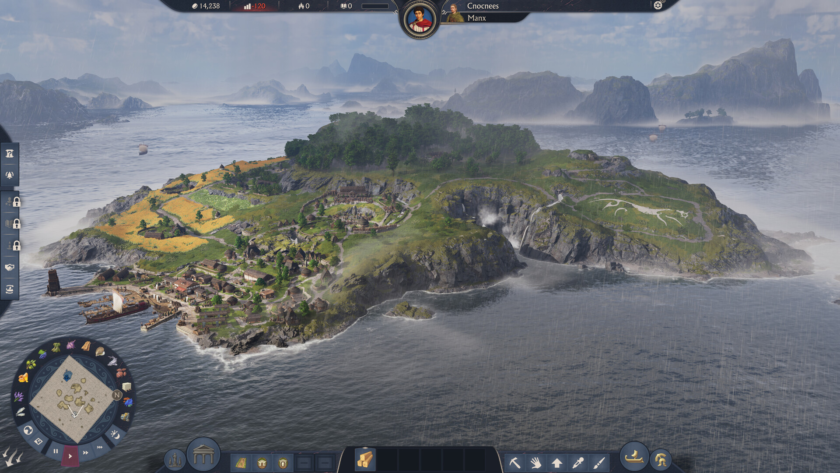
Every hour spent in Anno 117 feels like tending to something alive. Your city grows, breathes, and occasionally breaks under its own weight. It is not about fast victories or scripted drama. It is about that quiet moment when you zoom out, watch the sun set over your marble capital, and realize that against all odds, your empire is thriving because of every small decision you made along the way.
Visuals, Audio & Sound Design
Anno 117 is, without question, the most visually impressive game in the series. The level of detail in its Roman architecture is stunning. Every villa, bathhouse, and amphitheater feels handcrafted. Zoom in and you’ll see workers hauling amphorae, soldiers marching in formation, and children running through the streets.
Lighting plays a big role too. The Mediterranean regions glow with warm, golden tones, while Albion feels damp and foggy, a perfect contrast to Rome’s grandeur. The engine handles these environments beautifully, and the game performs well even when your city expands into a massive metropolis, though some frame dips can still appear during heavy activity.
The sound design completes the immersion. The soundtrack is rich and cinematic, filled with strings, drums, and subtle ambient chants that fit the Roman theme perfectly. The sound of hammers on stone, waves hitting the harbor, and crowds cheering in the forum all make your city feel alive. The voice acting, though limited, adds personality to advisors and citizens without feeling overdone.
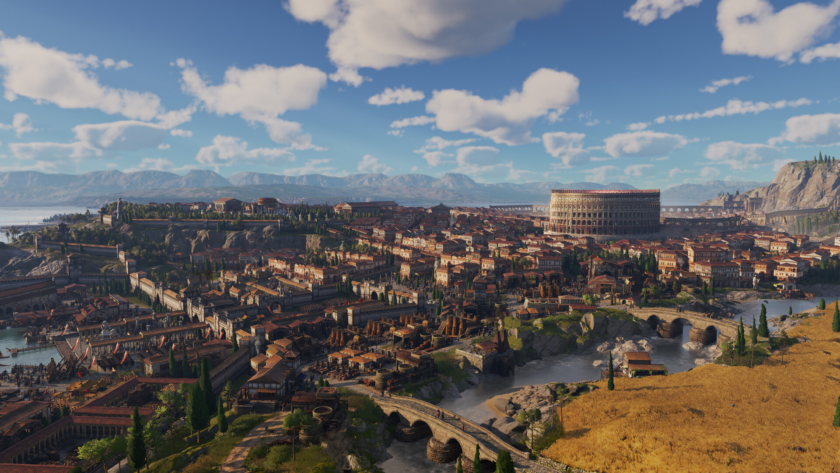
On PS5, Anno 117: Pax Romana makes surprisingly good use of the DualSense controller. The adaptive triggers and subtle haptic feedback bring a tangible sense of presence to the city-building process. You’ll feel a gentle pulse when a new structure is completed, a soft vibration as trade ships leave the harbor, and a heavier tension in the triggers when your legions march to war. The control scheme has been smartly reworked for consoles, with radial menus and a cursor-based navigation system that feels smooth once you get used to it. Managing large cities and intricate trade routes still takes more patience than on a mouse and keyboard, but the experience translates far better than expected. It’s comfortable, immersive, and surprisingly intuitive once muscle memory sets in. For players who prefer to build their empires from the couch, this is the most accessible Anno has ever been on a console.
FINAL THOUGHTS
Every hour spent in Anno 117 feels like tending a living organism – a breathing, trading, bickering Roman province that exists because you willed it into being. It’s not about the thrill of conquest or the drama of story beats; it’s about that quiet, satisfying moment when you zoom out, watch the sun set over your marble city, and realize that somehow, against all odds, your empire works.



